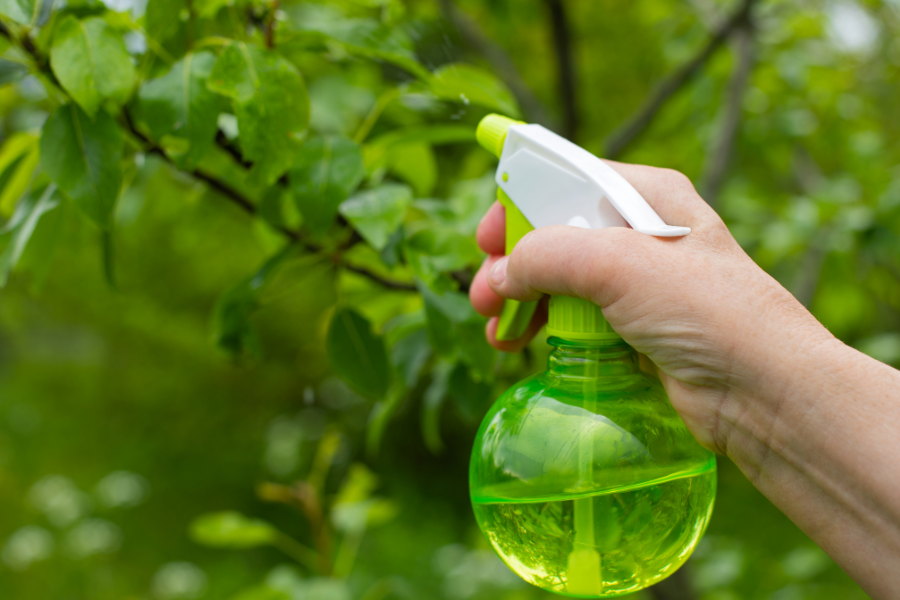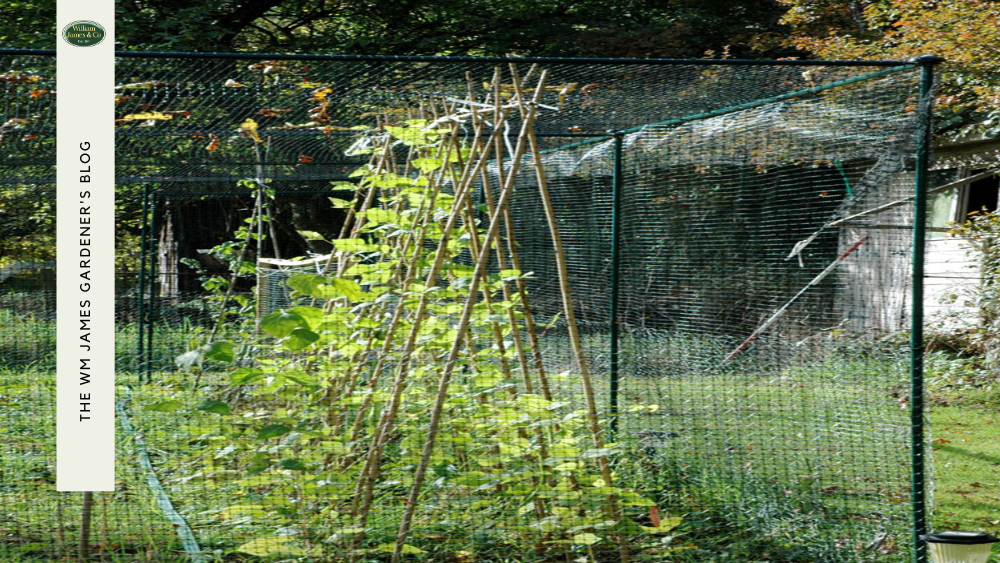We use cookies to make your experience better. To comply with the new e-Privacy directive, we need to ask for your consent to set the cookies. Learn more.
How to Get Rid of Bindweed: A Quick & Simple Guide
- Admin
- WM James Gardening Blog
- 26 Feb 2025
-
212views

Are you struggling to remove bindweed from your garden? Is it ruining your beautiful arrangement of flowers or selection of tasty veggies? Our guide will walk you through how to get rid of bindweed quickly and easily, so you can enjoy a weed-free garden once again!
As a perennial weed, bindweed is one of the most pesky and persistent plants that can invade your garden.
With its long, twining stems and heart-shaped leaves, it can quickly spread out over your flower beds or vegetable patches, choking out any other plants in its way.
But while it might be a pain to deal with, the important thing is there are a few things you can do to get rid of bindweed and keep it from coming back…
Before we jump right into the world of bindweed, below is a selection of our products, tools, and equipment that will help you eradicate bindweed from your garden. Shop today to upgrade your weed control arsenal, with free UK delivery available*!
In This Guide:
Why is Bindweed Problematic in Gardens?
How to Get Rid of Bindweed: Different Methods
How to Prevent Bindweed in the Future
What is Bindweed?
Although you'd think the clue was in the name, bindweed weed isn't actually a weed; it's a UK native perennial with characteristics of weeds.
Bindweed is a fast-growing, highly invasive weed vine that can outcompete other garden plants.
It's known for its ability to spread aggressively, taking over gardens, fields, and landscapes. This is why it's considered a nuisance among gardeners.
You'd recognise a bindweed flower as trumpet-shaped, typically white or pink, resembling small morning glory blooms with arrow-shaped leaves.
There are two common types of bindweed:
- Field bindweed: This is the most common type and has small white or pink flowers with arrow-shaped leaves.
- Hedge bindweed: These have larger, more triangular-shaped leaves, white flowers, and are typically found in hedges and along fences.

Why is Bindweed Problematic in Gardens?
Put simply, bindweed is problematic for gardeners because it can disrupt what you've worked so hard to grow and maintain.
Just like any other weed, bindweed is likely to steal nutrients from other plants, affecting their growth but aiding its own.
Getting rid of bindweed is hard, especially if it grows with your other desired garden plants. Bindweed root systems are often extensive, they’re long-lasting, and hardy, making life much harder for surrounding plants.
So, how do you get rid of bindweed?
We’re going to share with you five methods of bindweed removal and five preventative measures to stop them from returning.
Below are a selection of the tools you’ll need for the different methods:
How to Get Rid of Bindweed: Different Methods
Below are five different methods of killing and removing bindweed from your garden. So, if your hedge or field bindweed is unwanted, try one of our methods for yourself.
Fork Out Seedlings
Using a garden fork, such as our Burgon & Ball Stainless Steel Handfork, which is highly ergonomic and durable, simply lift the seedlings from the ground, ensuring you take the whole root system with you.
Seedlings are likely to appear in spring or autumn.
Dig Out Roots
If you think your bindweed has extensive roots, you should try digging them out with a spade.
Spades can reach deep into the soil, so if you don't have one, you should consider our Burgon & Ball Stainless Steel Perennial Spade. It's made from stainless steel, making it extremely heavy-duty, durable, and resistant to rust.
All you need to do is loosen the soil around the bindweed with a garden fork and dig out as much of the plant and its root system as possible with a spade. Bindweed can regenerate from the smallest root fragments, so try to get it all.
You may need to repeat this process a few times to catch any pesky regrowth.
Cutting With Snips
Cutting bindweed with secateurs will stop photosynthesis, essentially starving the bindweed and causing it to die off.
Get yourself a sharp pair of secateurs, preferably some with a carbon steel blade for lasting sharpness, like our Burgon & Ball Bypass Secateurs, and locate the base of the plant's stem.
Make sure you're wearing garden gloves when working with sharp blades!
Once you've found the base of all stems, cut them at ground level. Repeat this to prevent the plant from gaining energy until you notice the growth has totally stopped.
Dispose of your cuttings carefully to avoid spreading seeds or roots, and definitely don't put them in your compost bin!
Smothering
If you deprive the bindweed of light, eventually, the plant will stop retaining important nutrients from the sun and die. This method can take a few years to work fully, so use this as an ongoing weed control method, but it's effective, and the chances of regrowth are unlikely.
Plus, if you keep on top of it, the bindweed that makes it through won't significantly impact your garden. This is how it's done:
- Before you smother, clear the visible area of bindweed with your secateurs or simply pull them out with your hands.
- Cover that area with a high-quality weed control fabric, like our black heavy-duty ground cover, or compostable mulch.
- Check periodically and get rid of any shoots that breakthrough.
Use Systemic Weed Killer
Now, here at WM James, we're not the biggest fans of using chemical weedkillers in your garden. They can damage healthy plants and affect your garden's important ecosystem.
However, if you're really struggling with your infestation of bindweed and have exhausted all natural options, you can try a legal systemic weed killer.
Due to the extensive root systems, using a weedkiller won't actually be as quick of a fix as you think, though. If you choose this method, you'll need multiple applications over a long period.
How to Prevent Bindweed in the Future
So, you now know how to get rid of bindweed, but how do you prevent it from coming back?
We've got some preventative measures you can take to keep your garden free from bindweed. If you're an avid gardener, you'll likely already be doing some of these, but you might be grateful for the refresher!
Regular Weeding
We're sure you already carry out weeding in your garden, especially if you have a lot of crops to protect and care for. But call this your reminder to get back on track with doing it regularly.
Regular weeding will prevent bindweed from establishing in the first place. All you need to do is hand-pull weeds (or use a garden fork if they're stubborn) as soon as you see any new shoots that you didn't put there.
The earlier you catch it, the easier it is to manage.

Applying Mulch
Mulching your garden is a great way to deter weeds because they won't want to grow where they cannot receive any light.
We recommend adding a layer of mulch in your flower beds and veggie patches or anywhere you don't want bindweed to grow.
Mulching also has other benefits, including moisture retention and soil temperature regulation.
Maintaining Healthy Soil
Healthy soil with balanced nutrients promotes vigorous plant growth, which can outcompete bindweed.
There are plenty of ways to improve your soil's health, including introducing organic compost matter, practising crop rotation, and managing water and moisture levels.
If you don't already have a compost bin, you absolutely need one!
Our Beehive Composter, paired with our Compost Bin Liners, will give you the perfect place to start your compost heap. Simply add organic kitchen waste like egg shells, tea bags, and vegetable peelings.
Just be mindful not to include any animal waste because it can contain harmful parasites and bacteria.
Installing Netting
Physical barriers like netting can prevent bindweed from spreading into flower beds or veggie patches. Plant netting is the best way to protect your produce.
Placing netting along garden borders or newly planted areas can stop bindweed from spreading, and we have quite the selection for you to choose from.
All of our netting is extremely durable and heavy-duty. It's great at deterring weeds and also preventing pests like birds or insects from nibbling at your crops. Shop some of our favourites below!
Mow Regularly
This one is pretty self-explanatory, but regularly mowing your lawn will encourage a thick and healthy area of grass that can outgrow bindweed by shielding its seedlings from sunlight.
The healthier the grass, the more likely it is to limit bindweeds' access to other nutrients like water because the grass will take it all for itself.
Just be mindful of how low you mow the grass. If you cut it too low, bindweed will be even more likely to take over.
Conclusion: Keeping Your Garden Free From Bindweed
If you take pride in your garden's plants and flowers, you should prioritise them over bindweed. Otherwise, you'll find it'll take over and destroy your crops.
Sometimes, it's okay to keep a healthy supply of bindweed because of its benefits for surrounding wildlife. If you're passionate about your garden's ecosystem, you could keep bindweed in a controlled, less-cultivated wildlife corner to improve biodiversity.
But it's vital you keep it controlled, or you risk it spreading to other areas of your garden.
If you're less inclined to keep the nuisance that is bindweed, follow our steps above, and with consistency, you'll be free of it in no time!
If you need any more advice or have any questions about bindweed, please feel free to contact us! With over 60 years in the horticultural industry, we are more than happy to help.
Shop our bindweed removal and preventative products below!
*Get free delivery on all orders over £100.
FAQs
What Kills Bindweed Permanently?
We're not huge fans of using chemical weed killers here at WM James because they often disrupt healthy ecosystems. However, if you're out of options, a systemic weedkiller will do the job.
A herbicide should be your last resort, though. For natural ways to get rid of and prevent bindweed, check out our post above.
Can Covering Bindweed Kill It?
It absolutely can! Covering bindweed with things like weed control fabric and compostable mulch is a method called smothering. This stops light from getting to the weed, causing it to eventually die.
This method takes a few years to show results, but if you stick with it, it'll be highly effective.
Is Bindweed Good for Anything?
Bindweed is beneficial to wildlife, including pollinators, moths, and caterpillars. It's also a native wildflower in the UK and can be quite attractive.
However, bindweed can grow out of control, smother other plants, and take their necessary nutrients for themselves. If you're passionate about your crop, it's probably best to get rid of them.
Can Vinegar Kill Bindweed?
While vinegar might seem effective at first, it won’t completely kill bindweed. Vinegar is a non-selective herbicide, meaning it will kill any plant in contact with it.
However, vinegar doesn’t stay ‘active’ in the soil for very long, so it won't prevent the bindweed from growing back. It may also harm other plants in your garden, so it's not a recommended method.













